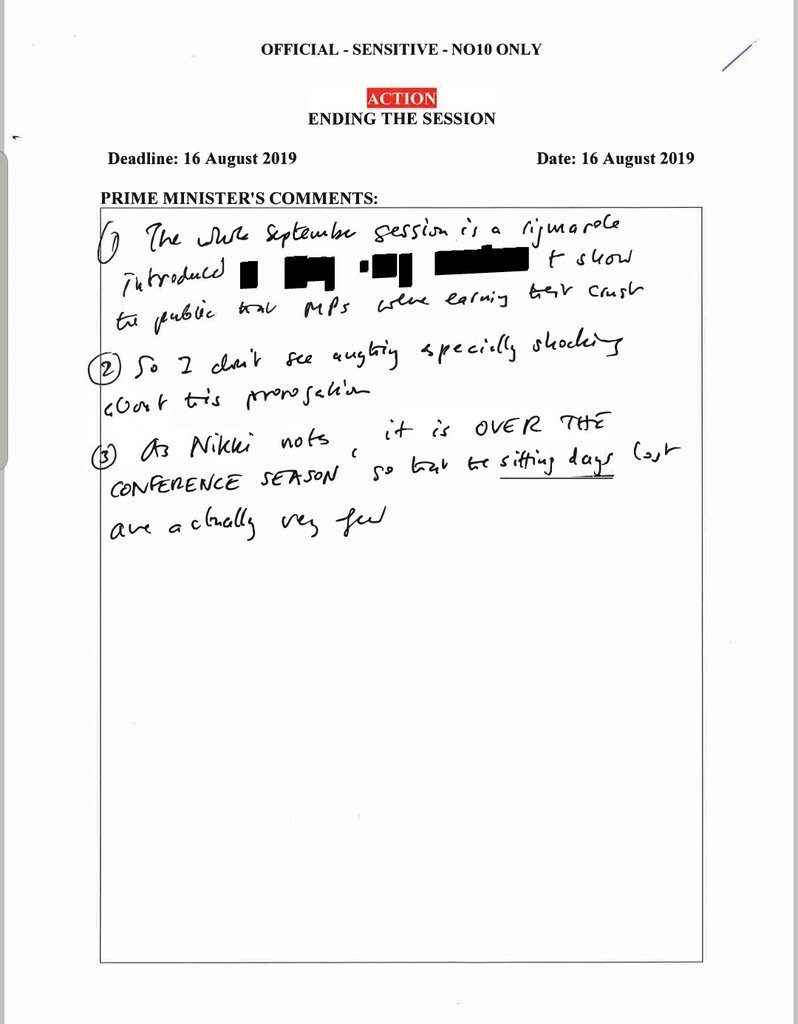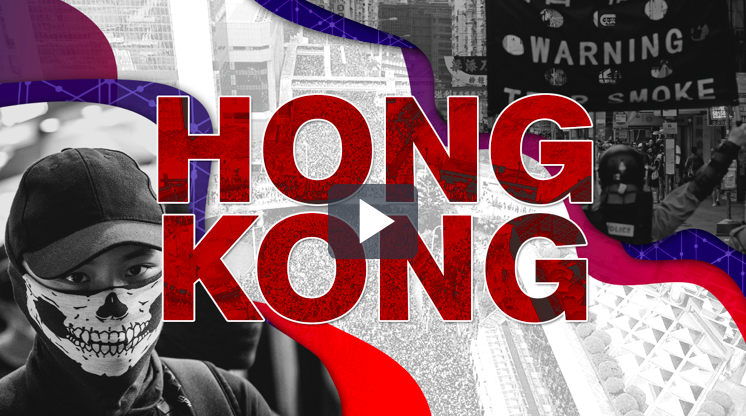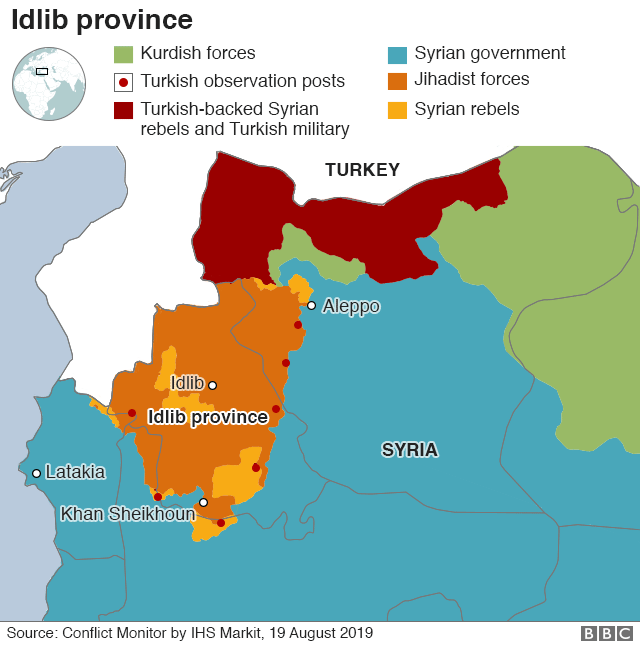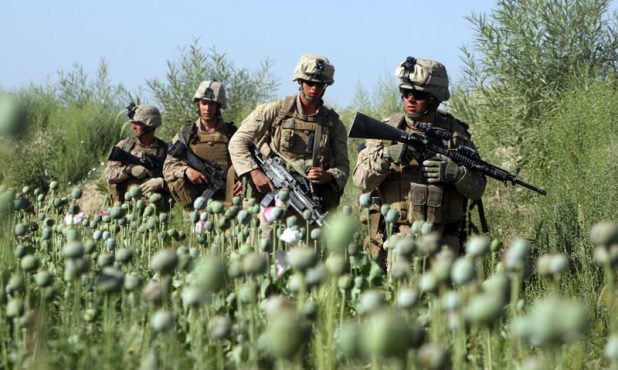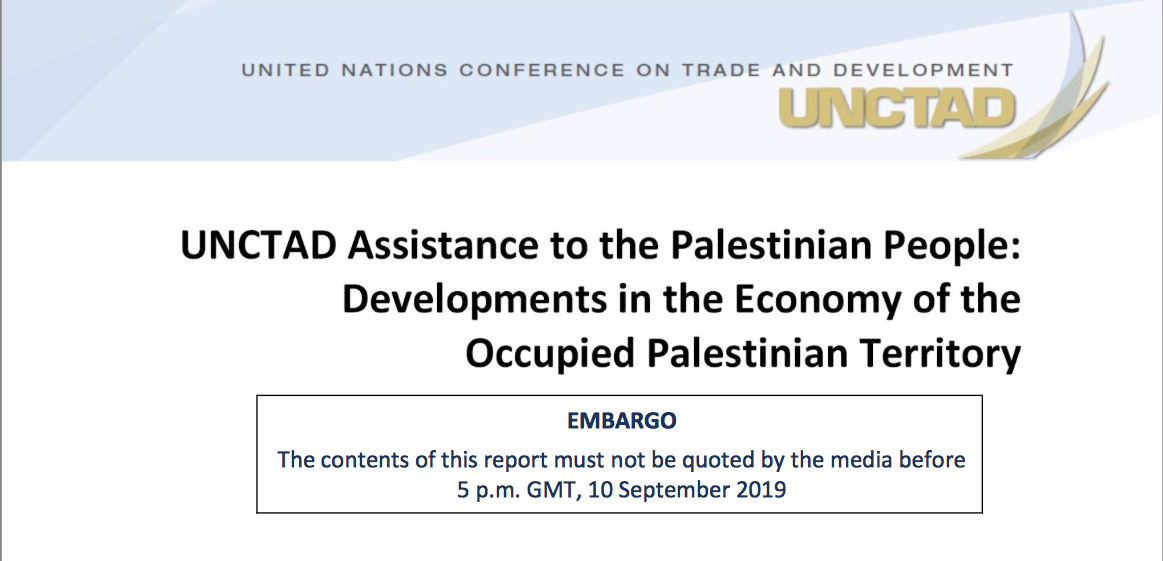The entities rolling out 5G are tormenting humanity and sucking their humanity from them by taking their minds and their health, while on the other side, you have the zombie apocalypse of all the people with their 4G cell phones, blindly going about destroying the world.
The 4G zombie apocalypse lot have to wake up. They need to wake up now before it is too late and time is of the essence.
***
It is time we asked a crucial question. How did we come to be in this 5G mad zone, poised to self-destruct? How on earth did we get here?
It appears that every expansion of the use of electricity since the 19th century correlates with drastic rises in all the modern diseases of civilization,[i] but this information has been kept from the public in order not to impede commercial profit, military expansion and universal convenience.[ii]
Since 100+ years of quantum physics has had little to no impact on the way we live our lives or how we perceive reality, we in the West still labour under the illusion that our bodies are made up of lumps of discrete matter that can be conveniently excised by a surgeon’s knife when they go wrong, this having been established in the 19th century by a grave-robbing spree to collect corpses for surgical experiments.[iii] Since no one seems to have considered the possibility that a living body might differ significantly from a dead one, this crude experimentation formed the foundation for the system that we now call Western medicine.[iv] All traditional and ancient healing wisdom based on a holistic view of a living body was outlawed by enforcing membership of a “professional body”.[v] In an inversion typical of our Western thinking, natural healing methods dating back thousands of years could then be termed not “traditional”, but “alternative” and “backward”.
Taking advantage of this – let us charitably call it an induced misconception – our militaries discovered that microwave weapons could be deployed silently and secretly to “defend us” from alleged enemies or perhaps for some more sinister purpose.[vi] They gleefully amassed compendia of thousands of studies,[vii][viii] many done in the Soviet bloc,[ix] in order to solidify their knowledge of the many and varied types of biological damage that these weapons could inflict on human beings at very little cost or inconvenience to those deploying them.
There was even a symposium organized by the World Health Organization in 1973 to discuss The Biologic Effects and Health Hazards of Microwave Radiation,[x] but the participants must have subsequently decided not to share this information with the public in view of their intelligent propensity to suspect that one day microwave weapons might be turned on them.
Instead of informing the public that their bodies were, in fact, not solid at all but entirely electrical,[xi] these military and industrial entities kept secret all their thousands of studies on the biological effects of microwaves.[xii]
They established regulatory bodies with grand names intended to impress the public, filled them with industry and military stooges,[xiii][xiv]and set electromagnetic radiation (EMR) exposure limits so high that it would be impossible to exceed them,[xv] similar to setting car speed limits at a million miles/kilometres per hour. Russia’s public exposure standards are 100 times more stringent than those in the US.[xvi]
The self-proclaimed international commission on non-ionizing radiation protection (icnirp), which is an NGO with no international or official status that appoints its own members with no oversight or transparency and protects no one from anything, while disclaiming all liability on its website for any of its pronouncements,[xvii] sets non-legally enforceable and astronomically high exposure guidelines that are time-averaged over 6 minutes to avoid taking peak pulsations into account and thereby falsify exposure calculations. What a pity no one told Jackie Kennedy about the 6-minute average when that magic bullet changed her life![xviii] How different history might have been! These implausible guidelines are embraced enthusiastically by the WHO and the International Telecommunication Union, both UN bodies, and most of the world’s governments, with no basis in law.

4G uses 2.45 GHz, which has been shown in more than 100 studies to cause a wide variety of severe damage to the body and nature at levels below the so-called safety guidelines of icnirp.[xix]
.[xx]
They have published pictures of plastic mannequin heads filled with gel that they put probes inside to demonstrate the heating effect. “Look at our wonderful science!”, they seem to say, “The mannequin head has suffered no ill-effects! Why should you worry?”[xxi]
Of course, there were people who spent a lot of time exposed to EMR through computer screens or other devices, who started to complain of illnesses. This was not good because it could affect the sales of electrical products and impede the military developing ever more sophisticated weapons, so the corrupt WHO just called these people mad:[xxii] on its website, it claimed that the EMR-related symptoms experienced by millions of people worldwide “may be due to pre-existing psychiatric conditions as well as stress reactions as a result of worrying about EMF health effects, rather than the EMF exposure itself”. Any apparent rise in cancer rates is rapidly attributed to improved diagnostic techniques rather than the more obvious true cause of exposure to an environmental toxin.
This was a good solution, for such people could not use machines to communicate to anyone else that they were experiencing health problems, and in fact even more conveniently, they became societal outcasts because many of them became homeless, living in cars in the woods where there was no EMR. And thus it was that almost no one learned that there was any problem.[xxiii]

As you would expect, there were a few scientists who didn’t care for the idea of getting paid lots of money to tell lies that kill people and they started to try to advertise the truth, but it’s not difficult to arrange for them to lose their jobs or their study funding to silence them.[xxiv] All you need do then is simply buy up the media and pay journalists to dismiss tens of thousands of awkward scientific studies on the basis that they do not provide “solid”, “real”, “proven”, ”credible”, “convincing”, ”conclusive”, “valid” or “established” evidence. And you employ pliable scientists to “war-game” the science by producing studies that show inconclusive results.
As time went on, the military wanted industry to develop better weapons for them, but this was expensive, and frankly it was becoming quite difficult to convince the public that there were that many enemies that they needed to be protected from. A lot of effort was put into creating and funding so-called terrorists, but it didn’t do much good because the public didn’t need to make much effort to realise that they were way less likely to be killed by a terrorist than by a lightning bolt, which is pretty unlikely in the first place.[xxv]
So the military and industry had a brilliant idea.[xxvi] What about commercialising this weapons technology as a communications technology that they could sell to the public, and then the public would pay for all the research and development of new and improved weapons?[xxvi]
Even better, they knew that cell phones would be addictive so everyone would want a phone.[xxvii] And they would be able to control people’s minds and tell them what to think, what to do and what to buy.[xxviii],[xxix] You could have complete physical surveillance inside and outside people’s homes.[xxx] How perfect! You could have a completely orderly society, with no one complaining about how eight people had accumulated wealth equal to that possessed by half the population of the planet.[xxxi] And if one in two children become autistic,[xxxii] they will make really efficient, robotic workers, will always be happy and never make trouble! We see endless articles saying it makes good business sense.[xxxiii]
After the kleptocracy of neoliberal economics,[xxxiv][xxxv] during which everything that could be stolen was stolen, all that is left is to consume the consumer him- or herself. Companies like Facebook are designed to do just that and Zuckerberg regards consumers as “dumb fucks” for giving away their information for free.[xxxvi]
Already in 1981, icnirp’s predecessor organization, irpa, acknowledged that general population exposure from man-made sources of microwave and radiofrequency (RF) radiation exceeded that from natural sources by many orders of magnitude.[xxxvii] In 1999, Dr. George L. Carlo warned that the occurrence of brain cancer and certain types of tumours among cellular phone users was twice that of non-users so that consumers could make an “informed judgment about how much of this unknown risk they wish to assume in their use of wireless phones”. His evidence was suppressed.[xxxviii]
Work done by Russian and Ukrainian researchers published in a US review in 2001 established that, during the previous 50 years, the round-the-clock power of radio emissions had increased by a factor of more than 50,000.[xxxix] The same paper discussed the development of psychic disturbances under EMR exposure showing effects ranging from changes in mood to nonsensical ideas and aural and visual hallucinations, and disturbances in behaviour all the way to attempts at suicide.
While people’s minds are disturbed by their exposure to EMR, the mainstream media plies them with blanket coverage of Greta Thunberg fear-porning about an unsubstantiated 12 years until doomsday from non-existent anthropogenic climate change in order to persuade them that they need a totalitarian, world government that can guarantee their safety in uncertain times.[xl],[xli][xlii]

Populations have been discombobulated by 25 years of cell phone use, 12 of them under intense “smart” phone attack. Parents are so fascinated by their phones that their children drown in swimming pools right in front of them.[xliii] More and more people walk out into the road when a car is coming or fall over or down something while peering into “smart’ phones.[xliv] We hear of adverse effects on learning, attention, and behaviour.[xlv] Children are being exposed to magnetic fields from cell phones that breach WHO’s recommended 0.3μT safety limit by a factor of 20,000.[xlvi]
Meanwhile, insurance companies, which presumably have to protect their existence by keeping a grip on reality, refuse to insure against EMF injuries or damage.
The deployment of 5G is presented by militaries, governments[xlvii] and commercial entities as a race in which the winner takes all. Why should such a dangerous and completely untested technology have to be rolled out so quickly? Could it be that the Internet is empowering people who are increasingly impoverished to open their eyes about the kleptocrats who plunder the planet? Could it be that the true health effects of 25 years of cell phone use cannot much longer be hidden?[xlviii]
Whatever the reason, Eisenhower’s military-industrial complex has revealed itself in the 5G project, showing its hand clearly in the crossover between the two, including in the regulatory agencies (see image below showing affiliations of Institute of Electrical and Electronics Engineers (IEEE) meeting participants).[xlix] The limited frequencies available have to be shared among commercial and military entities.
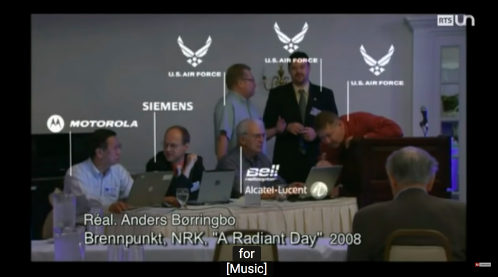
Thus 25 years of diminishing mental capacity among populations due to irradiation facilitated by the lie of the thermal hypothesis, combined with the apparent urgency to protect ill-gotten gains and prevent populations awakening to the truth and flexing their muscles to redress the power balance have conspired to produce a mad free-for-all – a licence to irradiate without constraint from every corner of the planet and from above our heads.
Technicians have been given free rein to dream up ways of attacking populations: from under manhole covers; from cabinets on the street; from lamp posts that blast blue light with no more diffusers,[l] as well as 5G EMR in laser-like beams; from adhesive strips of tiny but powerful antennas hidden under carpets; on the street; in trains; in planes; in cars; in buses; blasting through the walls of our homes; from our television sets; from fridges, hairdryers, milk cartons, babies’ diapers, baby monitors, “smart” phones, “smart” meters, and soon from the billions of devices that are planned to be connected to the Internet of Things. This is not to mention the plethora of “wearables” and cell phone apps that purport to help you monitor your health status while seriously undermining it. The plan is to beam 5G down to Earth from satellites in the Earth orbits, from networked civil aircraft, from pseudosatellites in the stratosphere … In other words, from everywhere. The stated plan and the word trumpeted in the 5G literature is to “blanket” every inch of the Earth, with no escape for any of the approximately 100 million people worldwide already made sick by the toxic environment supplied courtesy of the first to fourth generations of WiFi, to which 5G will be additional.

There will also be no escape for the trees,[li] which have to go as they block the 5G signals and risk interrupting the continuous signals essential for self-driving vehicles,[lii] nor for the birds,[liii] the insects[liv] or the food chain.[lv] Any remnants of a sane, balanced, calm and quiet life will be wiped out by 5G, 4G, 3G, or any other G of wireless technology. We are complicit in our own destruction and, worse, in the wanton destruction of all life on this Earth.
Greed, fear, stupidity and hubris have brought us to this point, complemented by inanity, laziness, complacency and unconsciousness.
The 5G Dementors are closing In for the kill. The question is whether the people choosing to play out the 4G Zombie Apocalypse on their “smart” phones can tear themselves away long enough to care. If they can, or if at least some of them can, they need to understand certain realities:
- There is no safe limit for artificial EMR. It is alien to our biology.
- Cell phones were never tested for health or safety and we should not be using them.[lvi] They destroy us, our children,[lvii] our fertility, our minds and our planetary home. Convenient they may be, but they have to go.
- WiFi was never tested for health or safety and we should not be using it. It destroys us, our children, our fertility, our minds and our planetary home. Convenient it may be, but it has to go.
- The problem with cell phones and WiFi has nothing to do with power levels. Wireless technology cannot be made safe by reducing the power. There are effects at near-zero power, and for some effects, there is an inverse power relationship, i.e. the lower the power, the worse the harm.
- Electricity has been killing us slowly since its introduction. We need to constrain its use, not expand it. Fibre-optic cable enables 5G. If you don’t want 5G because it’s dangerous, don’t build the infrastructure that it depends on.
- Our bodies function on biophotons. Blue light from car headlamps and street lights– both of which for some unexplained reason suddenly are no longer fitted with diffusers[lviii]– is blinding and then killing us and the biosphere. Modulating light for LiFi would kill us faster and possibly even more effectively than 5G.[lix]
- There is one solution only to the problems of WiFi, cell phones and 5G: STOP USING THEM. All the time you pretend to ask the telcos to stop building this infrastructure while you pay them to do so, you are sending the wrong message.
- Wake up! Choose life!Choose love! Choose the Earth!
- Smash your phone
- Get a landline
- Cable your computer
- OR … you could keep your portable not-smart-at-all computer, just as long as it is never connected to WiFi and not killing life on this planet.
It’s not rocket science.
It’s just simple common sense.
*
Note to readers: please click the share buttons above or below. Forward this article to your email lists. Crosspost on your blog site, internet forums. etc.
Claire Edwards, BA Hons, MA, worked for the United Nations as Editor and Trainer in Intercultural Writing from 1999 to 2017. Claire warned the Secretary-General about the dangers of 5G during a meeting with UN staff in May 2018, calling for a halt to its rollout at UN duty stations. She part-authored, designed, administered the 30 language versions, and edited the entirety of the International Appeal to Stop 5G on Earth and in Space (www.5gspaceappeal.org) and vigorously campaigned to promote it throughout 2019. In January 2020, she severed connection with the Appeal when its administrator, Arthur Firstenberg, joined forces with a third-party group, stop5ginternational, which brought itself into disrepute at its foundation by associating with the Club of Rome/Club of Budapest eugenicist movement. She is a frequent contributor to Global Research.
Notes
[i] Arthur Firstenberg. The Invisible Rainbow: A History of Electricity and Life(summary). Available at https://www.5gexposed.com/wp-content/uploads/2019/04/English-Summary-of-The-Invisible-Rainbow-A-History-of-Electricity-and-Life-3.pdf.
[ii] Microwave Weapons Expert Barrie Trower: “This is the saddest and most despicable document ever published in history”: “Biologic Effects of Electromagnetic Radiation (Radiowaves and Microwaves – Eurasian Communist countries (U) – DST-1910S-074-76 Date of Publication: March 1976). This is a Department of Defense Intelligence Document prepared by the US Army Medical Intelligence and Information Agency and approved by the Directorate for Scientific and Technical Intelligence of the Defense Intelligence Agency.”
Page vii:
“If the more advancecl nations of the West are strict in the enforcement of stringent exposure standards, there could be unfavorable effects on industrial output and military functions.” (Translation: Western nations must have lax exposure limits so that military weapons and dangerous commercial products can be developed.) Available at https://www.orsaa.org/uploads/6/7/7/9/67791943/__us_dia_1976_biological_effects_of_electromagnetic_radiation.pdf?fbclid=IwAR2_Y3DCG4i2IH29tA03jS49bj0_9ab6LzYe5ByGT6WCCqZdcR_YhsI-9Lc.. Accessed 11 September 2019.
[iii] Mike Williams. Grave Robbing in Washington: A History of the Morbid Trade. 26 October 2015. Available at https://blogs.weta.org/boundarystones/2015/10/26/grave-robbing-washington-history-morbid-trade. Accessed 13 September 2019.
[iv] Chris Kanthan. World Affairs. How Rockefeller founded modern medicine and killed natural cures. Available at https://worldaffairs.blog/2015/10/20/how-rockefeller-founded-modern-medicine-and-killed-natural-cures/. Accessed 13 September 2019.
[v] Dr. Mercola. Chiropractors and Naturopaths – Are They Dangerous? Available at https://articles.mercola.com/sites/articles/archive/2011/12/30/rethinking-medical-associations-best-interests.aspx. Accessed 13 Setember 2019. “The medical profession has a long history of opposing alternative healing professions. The rules of engagement have changed; as the AMA is finding new “legal” ways to discredit and limit practitioners of natural medicine. … Other medical associations have joined forces to manipulate the public into believing natural medicine is quackery by spreading propaganda and mistruths.”
[vi] Silent Weapons for Quiet Wars. Introduction: “This document represents the doctrine adopted by the Policy Committee of the Bilderburg Group during its first known meeting in 1954. The document, dated May 1979, was found on 7 July 1986 in an IBM copier that had been purchased at a surplus sale.” Video: https://www.youtube.com/watch?v=s_38tsQ4p0I;
https://www.youtube.com/redirect?event=video_description&v=s_38tsQ4p0I&redir_token=L7h3DsobfUbnD56o9VTeOLzDQDB8MTU2ODI4ODIwM0AxNTY4MjAxODAz&q=http%3A%2F%2Fwww.stopthecrime.net%2Fdocs%2FSILENT%2520WEAPONS%2520for%2520QUIET%2520WARS.pdf.
[vii] Rome Laboratory, Air Force Materiel Command, Griffiss Air Force Base, New York. June, 1994. Available at: https://emfrefugee.blogspot.com/2014/09/radiofrequencymicrowave-radiation.html. Accessed 11 September 2019. Conclusion: Exposure to RF/MW radiation is known to have a biological effect on living organisms. … Adherence to the ANSI Standard [9] should provide protection against harmful thermal effects and help to minimize the interaction of EM fields with the biological processes of the human body [9].
Excerpts
- Absorption: It is known that RF/MW radiated energy will be absorbed by the tissue of the human body. The depth of energy penetration into the tissue depends primarily on the wavelength of the incident radiation and the water content of the tissue [3], [6].
- Auditory effects: Individuals exposed to pulsed RF/MW radiation have reported hearing a chirping, clicking or buzzing sound emanating from inside or behind the head.
- Biological effects:
- Adverse biological effects can occur when the body is subjected to high doses of RF/MW radiation [161.
- Exposure of living organisms to RF/MW radiation can have a potentially dangerous biological effect. … Union. East Block countries have set more stringent standards than nations in the West [3], (8], (11], [22].
- Exposure to higher levels of radiation can cause serious biological effects.
- Investigators in the Soviet Unionand Eastern Europe have placed a great emphasis on the nonthermal effects of biological exposure to RF/MW radiation. They contend that electromagnetic interactions with the bioelectrical and biochemical functions of the body constitute a more serious health risk than effects from thermal heating. Nonthermal disruptions have been observed to occur at power density levels that are much lower than are necessary to induce thermal effects.
- Blood:
- Blood circulation can be altered in the affected area and other biological functions could be indirectly affected [12].
- There is evidence that RF/MW radiation can effect the blood and blood forming systems of animals and humans.
- Body:
- Depth of energy penetration: Biological materials such as skin are dielectrics that consist mostly of water. Hence, these dielectrics are rich in molecular dipoles and are able to quickly absorb millimeter-wave radiation.
- Body geometry: The orientation of the human body with respect to the incident EM field will determine the amount of RF/MW energy that is absorbed by the tissue.
- RF/MW radiated energy is nonuniformily deposited over the whole-body surface.
- Burns:
- Burns can cause increased vascular permeability. This can lead to significant losses of body fluids and electrolytes.
- Serious burns can suffer fluid losses for a few days.
- Cancer:
- In 1962, S. Prausnitz and C. Susskind reported experimental results that showed an increase in cancer among test animals exposed to RF/MW radiation.
- In 1976, A. A. Kapustin, M. I. Rudnev, G. I. Leonskaia, and G.I. Knobecva (reference found in [17]) reported alterations in the chromosomes of bone marrow cells in laboratory animals that were exposed to RW/MW radiation.
- Nonthermal effects may provide important clues to the understanding of carcinogenic reactions in the human body [8],[32].
- Pulsed and CW radiation ranging in frequency from 15 to 2950 MHz and power densities from 7 to 200 mW/cm2 have caused abnormalities to occur in chromosomes. … They concluded that irradiation of tissue by pulsed RF/MW sources causes cell membranes to become more permeable to destructive chemical mutagens [8].
- Cardiovascular effects:
- Researchers examined 100 patients suffering from radiation sickness. It was found that 71 of the patients had some type of cardiovascular problem.
- Soviet investigators claim that exposure to low levels of RF/MW radiation that are not sufficient to induce hyperthermia can cause aberrations in the cardiovascular system of the body [7].
- The WHO investigation found evidence linking exposure of RF/MW radiation to cardiovascular disease and cancer.
- Clothing effects: Figure 6 shows the relationship between clothing thickness and coupling efficiency as a function of frequency. The authors note that wet or damp clothing may actually reduce the amount of energy absorbed by the body because of the Debye relaxation of the water molecules [6].
- Congenital abnormalities: They found gross congenital abnormalities in rodent fetuses that were irradiated by a 2450 MHz RF/MW source at an incident power intensity of 107.4 mW/g [8].
- Eyes:
- However, minimum exposure levels sufficient to cause ocular damage are not certain [301].
- In 1970, Zaret, Kaplan and Kay (reference found in [30]) reported a large number of cataracts induced in humans as result of occupational exposure.
- The researchers concluded that exposure to RF/MW radiation had caused the lens of the eye to age faster than normal (30].
- Heating: wavelengths the perception of warmth may occur at a power density level of about 8.7 mW/cm 2.
- Neurological effects: It was observed that rabbits exposed to the 5 and 10 uW/cm2 power density levels suffered alterations in the electrical activity of the cerebral cortex and disturbances to the conditioned reflex response.
- Neurological effects: observations of laboratory animals subjected to low power EM fields showed alterations in the electrical activity of the cerebral cortex and disruptions in the activity of neurons [17].
- Resonance frequency: The ANSI Standard [9] reports that the human body will absorb 7 times more energy fron radiation emitted at the resonance frequency than at a frequency of 2450 MHz [9]. … The free space whole-body resonance frequency is reported to be between 61.8-77 MHz for a Standard Model of Man [91, [22], (25]. … When the human body is in contact with the electrical ground, the whole-body resonance frequency is reduced to about 47 MHz (22]. Figure 3 shows the SAR versus the incident EM field frequency for conditions of free space and grounding [22].
- Skin: IR [Ionizing] radiation will not penetrate the outer body surface as deeply as RF/MW radiation emitted at a frequency of 2.45 GHz.
- Symptoms: The symptoms were listed as: hypotension, slower than normal heart rates, an increase in the histamine content of the blood, an increase in the activity of the thyroid gland, disruption of the endocrine-hormonal process, alterations in the sensitivity to smell, headaches, irritability, and increased fatigue.
[viii] Bioeffects of Selected Nonlethal Weapons. Department of The Army, United States Army Intelligence and Security Command. Freedom of information/Privacy Office. 17 February 1998. Available at: https://www.petermooring.nl/blog/?p=93. Accessed 11 September 2019. Effects described:
- Microwave heating – Heating the human body to incapacitate a person
- Microwave hearing – Letting a person hear sounds/voices in his head without normal sound
- Neural control – Disrupt normal muscle control, invoke muscle spasms
- Acoustic energy – Pressure sensations, nausea, eye spasms, see the world turning
- Laser induced biological effects:
- Chemical effect
- Thermal effects – The primary mechanism for laser induced injury
- Mechanical or acoutical mechanical effects – Pressure wave can result in explosive tissue injury
- The effects of lasers on eyes:
- Dazzling or induced glare
- Flashblinding or loss of night adaptation
- Permanent or semipermanent blinding.
[ix] Influence of high-frequency electromagnetic radiation at non-thermal intensities on the human body (a review of work by Russian and Ukrainian researchers). Published in No Place To Hide – Newsletter of the Cellular Phone Taskforce Inc., February 2001. Available at: https://magdahavas.com/wp-content/uploads/2018/02/RFR-Russian-Ukrainian-1.pdf.
Highlights:
- Humanity may have crossed a threshold of recoverability from PEM exposure …
- No safe dose, even at extremely low EMF intensity …
- Russian standards hundreds to thousands times more stringent than Western ones …
- Information flow disturbance in the body among bio-damage mechanisms.
[x] Biologic Effects and Health Hazards of Microwave Radiation. This 350-page document is the result of a symposium (convened by the World Health Organization, among others), held in Warsaw from 15–18 October 1973, with the participation of 60 researchers specializing in the biological effects of microwaves on humans.
The document describes primarily the adverse effects of microwave radiation on neurological, vascular and cardiac systems, as well as on the thyroid and thrombocytes; it also reports that microwaves can cause Type II diabetes, sleep issues, cataracts, opacification of the ocular lens, and behavioural disorders, among others. Available at:
https://www.emfoff.com/symposium/. Accessed 11 September 2019.
[xi] Jerry Tennant, MD: Healing is Voltage — The Physics of Emotions | EU2017
29 September 2018. https://www.youtube.com/watch?v=pm-Ia6vI4PA. Accessed 11 Septembr 2019.
Most people have heard of the “mind/body connection” and are aware that emotions affect the way people act. However, few can describe how that works. What is relatively new is our understanding that emotions are stored in and around the body as magnetic fields. Not only do these magnetic fields cause the biochemical effects noted above, but they also block the flow of voltage in the associated muscle battery packs that provide the voltage necessary for organs to function and repair themselves. He will discuss the human body’s battery packs, wiring system, and the physics of how our electronic systems are affected by these emotions. In addition, he will discuss how other magnetic fields and scalar energy can be used to erase these emotions, leaving behind only memories that do not disrupt our health and physiology. (cont.)
[xii] Department of the Army, United States Army Intelligence and Security Command. Bioeffects of Selected Nonlethal Weapons. 17 February 1998 (date of FOIA release 13 December 2006).
www.targetedamerica.com/uploads/1/2/3/9/123991101/bioeffects_of_selected_non-lethal_weapons.pdf.
[xiii] Environmental Health Trust (https://ehtrust.org/policy/outdated-ansi-and-ieee-standards/): In 1985 the United States government adopted an exposure limit from the American National Standards Institute (ANSI-an industry & military organization), ANSI C95.1-1982 Exposure Limit Standard. In 1996 the U.S. government adopted (updated from the ANSI Standard) the IEEE C95.1-1991 Exposure Limit Standard. IEEE, the Institute of Electrical and Electronic Engineers is substantially an industry and military organization.
[xiv] Video (in French): Être connecté peut nuire gravement à la santé – Reportage suisse remarquable (Being connected can seriously harm your health – remarkable Swiss reporting). 31 May 2017. Available at https://www.youtube.com/watch?v=PnnUbWRGJz8. Excerpt”
(Switch on English subtitles at 15.05)
“… hence the following question. Do the current emission standards effectively protect us from electromagnetic radiation? it should be borne in mind that the standards were drawn up well after the time when all electrical equipment was already in place. These standards are set by the industry in such a way as to have irradiation values that are acceptable and to avoid lawsuits.
“These images from Norwegian television show the power of industry in the establishment of standards.
“The footage was shot at a meeting of the Institute of Electrical and Electronics Engineers (IEEE), an organization of world telecommunications experts. When their members specialising in electromagnetic safety reveal the names of their employers, here’s what we learn:
“[(C Keito?), Motorola; (Mike Welby?), US Air Force; (?) US Army; Motorola; Alcatel-Lucent; US Air Force; Nokia; France Telecom; Ericsson; US Air Force]
“In fact, they are industry representatives. IEEE has issued recommendations on exposure values related to mobile telephony, which have been adopted without much modification by Europe and Switzerland.
“The standards are defined not for health protection, saying there are no effects, there are no risks. They simply say, “Above these values one is certain that there is a risk of biological effects in the short term”. And actually that message has been distorted a bit by saying that below those values, nothing happens.
“In most countries today, the maximum exposure value for antennas is 61 volts per metre. Switzerland has adopted this standard by adding a precautionary principle limiting exposure to 6 volts per metre in places designated “places of sensitive use”. This includes housing, schools, workstations inside buildings, some playgrounds, but not outdoor public spaces or transit areas such as railway stations.
“The telcos are constantly getting greedier. They want to get rid of the 6-volt per-metre straitjacket that they feel limits their activities. …”
[xv] Amy Worthington. The Radiation Poisoning Of America. Global Research, 9 October 2007; Idaho Observer, 7 October 2007. Excerpt: “Prior to 1996, the wireless age was not coming online fast enough, primarily because communities had the authority to block the siting of cell towers. But the Federal Communications Act of 1996 made it nearly impossible for communities to stop construction of cell towers “even if they pose threats to public health and the environment. Since the decision to enter the age of wireless convenience was politically determined for us, we have forgotten well-documented safety and environmental concerns and, with a devil-may-care zeal that is lethally short-sighted, we have incorporated into our lives every wireless toy that comes on the market. We behave as if we are addicted to radiation. Our addiction to cell phones has led to harder “drugs” like wireless Internet. And now we are bathing in the radiation that our wireless enthusiasm has unleashed. Those who are addicted, uninformed, corporately biased and politically-influenced may dismiss our scientifically-sound concerns about the apocalyptic hazards of wireless radiation. Available at https://www.cellphonetaskforce.org/the-radiation-poisoning-of-america/. Accessed 11 September 2019.
[xvi] Ibid. “Myriad symptoms of radiation poisoning can be induced at exposure levels hundreds, even thousands of times lower than current standards permit. Russia’s public exposure standards are 100 times more stringent than ours because Russian scientists have consistently shown that, at U.S. exposure levels, humans develop pathological changes in heart, kidney, liver and brain tissues, plus cancers of all types.”
https://www.cellphonetaskforce.org/the-radiation-poisoning-of-america/.
[xvii] Disclaimer on icnirp website: ICNIRP e.V. undertakes all reasonable measures to ensure the reliability of information presented on the website, but does not guarantee the correctness, reliability, or completeness of the information and views published. The content of our website is provided to you for information only. We do not assume any responsibility for any damage, including direct or indirect loss suffered by users or third parties in connection with the use of our website and/or the information it contains, including for the use or the interpretation of any technical data, recommendations, or specifications available on our website. Available at https://www.icnirp.org/en/legal-notice.html. Accessed 11 Septembr 2019.
[xviii] Bill Hicks on the Kennedy Assassination. Available at https://www.youtube.com/watch?v=8aaqN7SqLpU. Accessed 11 Seotember 2019.
[xix] Review: Biological and pathological effects of 2.45 GHz radiation on cells, fertility, brain, and behaviour. 26 June 2019. Available at http://www.emfsa.co.za/research-and-studies/review-biological-and-pathological-effects-of-2-45-ghz-radiation-on-cells-fertility-brain-and-behavior/. Accessed 13 September 2019. Original German: https://www.diagnose-funk.org/publikationen/artikel/detail&newsid=1256. Conclusions: Based on the extensive body of research and the adverse health effects demonstrated in the majority of the studies, it is recommended that steps should be taken to minimize RF radiation exposure in accordance with official recommendations. Wired solutions should be given preference. Current exposure limits and SAR values do not protect from health risks associated with Wi-Fi radiation.
[xx] Dr. Lennart Hardell. ICNIRP draft on new radiofrequency guidelines is flawed. 2 July 2019. Available at http://www.avaate.org/spip.php?article2828. Accessed 13 September 2019. “Most remarkable is that the science on health effects is still based on thermal (heating) effect from RFR just as the evaluations published 1998 and updated in 2009. In the draft only thermal effects are considered for health effects (page 7). Van Rongen states there is ’No evidence that RF-EMF causes such diseases as cancer’ (page 8). These comments are based on the power point presentation. However, there is no evidence that non-thermal effects are considered and thus a large majority of scientific evidence on human health effects, not to mention hazards to the environment. Thus the basis for new guidelines is flawed and the whole presentation should be dismissed as scientifically flawed.”
[xxi] EMF Dosimetry (General methodology and RF region) EMF Dosimetry (General methodology and RF region). Dr. Soichi Watanabe, ICNIRP Member Affiliated with National Institute of Information and Communications Technology (NICT), Japan Available at https://www.icnirp.org/cms/upload/presentations/NIR2012pdf/watanabe.pdf. Accessed 13 September 2019.
[xxii] Olga Sheean. The [World Health Organization] WHO cover-up that is costing us the Earth.
Video available at: https://www.emfoff.com/cover-up/?fbclid=IwAR0x-VNP6A4UTpCgwasElSJOG_GyuswK3vED7piTY4RWDmAFPq-rlDwNckE. The facts about 5G and other sources of wireless radiation have been very skilfully downplayed and covered up by WHO, industry and governments, causing many people to believe it’s not a problem. The truth is that it’s causing havoc all over the planet. Find out what WHO and governments have been hiding from you. Download PDF – The WHO cover-up that is costing us the Earth: Are you ready to say goodbye? The 5G spin, the deeper truth and what you can do: https://www.emfoff.com/wp-content/uploads/2019/06/WHO-cover-up.pdf.
[xxiii] Belpomme D, Campagnac C, Irigaray P. Rev Environ Health. 2015;30(4):251-71. doi: 10.1515/reveh-2015-0027. Reliable disease biomarkers characterizing and identifying electrohypersensitivity and multiple chemical sensitivity as two etiopathogenic aspects of a unique pathological disorder.
[xxiv] United Nations. Human Rights Council: 5G is cruel, inhuman and degrading treatment under resolution 39/46. 22 February 2019. Available at. https://undocs.org/A/HRC/40/NGO/217/. Henry Lai: Cell Phones and Cancer – TalkingStickTV. 23 June 2011. Available at https://youtu.be/NZl2MSHDKls. Accessed 13 September 2019.
[xxv] Deadly Statistics. The chances of being killed ina terrorist attackare about 1 in 20 million. A person is as likely to bekilled by his or her own furniture, and more likely to die in a car accident, drown in a bathtub, or in a building fire than from a terrorist attack. Available at http://www.lifeinsurancequotes.org/additional-resources/deadly-statistics/. Accessed 13 September 2019.
[xxvi] Barrie Trower. Microwaves in weapons and wireless telecommunication. “Weapons utilize much less power [than telecom radiation].” Available at https://www.youtube.com/watch?v=k3QeSOU8qC0. Accessed 13 September 2019.
[xxvii] Peter Delos. “The Way to a New Phased Array Radar Architecture.” TechTime: Electronics & Technology News. 15 January 2018. Available at https://techtime.news/2018/01/ 15/analog-devices-phased-array-radar/. Accessed 14 September 2019. “Although there is a lot of discussion of massive MIMO and automotive radar, it should not be forgotten that most of the recent radar development and beamforming R&D has been in the defense industry, and it is now being adapted for commercial applications. While phased array and beamforming moved from R&D efforts to reality in the 2000s, a new wave of defense focused arrays are now expected, enabled by industrial technology offering solutions that were previously cost prohibitive.”
[xxviii] Democracy Now! How Big Wireless War-Gamed the Science on Risks, While Making Customers Addicted to Their Phones. Available at https://youtu.be/un-vXIzIIOo. Accessed 13 September 2019. We continue our conversation with Mark Hertsgaard, The Nation’s environment correspondent and investigative editor, who co-authored a major new exposé: “How Big Wireless Made Us Think That Cell Phones Are Safe.” He discusses how wireless companies “war-gamed the science” by funding friendly studies and attacking critical ones; the potential dangers of the pending expansion of 5G with the “Internet of Things”; the role of the telecommunications industry officials turned federal regulators; and how companies deliberately addicted customers to this technology through the addition of social media.
[xxix] Ben Piven. Rebelling against attention economy, Humane Tech movement expands: A growing coalition of social groups is pushing back against tech companies that feed digital addiction and overload. 25 July 2019. Available at
https://www.aljazeera.com/ajimpact/rebelling-attention-economy-humane-tech-movement-expands-190724210851788.html. |Tristan Harris is fighting to save you. An ex-Google design ethicist, Harris cofounded the Time Well Spent movement and the Center for Humane Technology (CHT) to combat the ‘existential threat’ of unchecked technological power over humanity, from digital addiction and information overload to Twitter bots and political polarisation. CHT is trying to halt what it calls the ‘downgrading’ of humans by smartphones and social media – within an ‘extractive’ attention economy where Silicon Valley firms profit from “playing tricks” on people’s minds. ‘More than two billion people – a psychological footprint bigger than Christianity – are jacked into social platforms,’ says a pamphlet from CHT. ‘Algorithms recommend increasingly extreme, outrageous topics to keep us glued to tech sites fed by advertising … It’s a race to the bottom of the brainstem.’”
[xxx] Garfield Benjamin. Silicon Valley wants to read your mind – here’s why you should be worried. 16 August 2019. Available at
https://www.activistpost.com/2019/08/silicon-valley-wants-to-read-your-mind-heres-why-you-should-be-worried.html?utm_source=Activist+Post+Subscribers&utm_medium=email&utm_campaign=61979a3ea3-RSS_EMAIL_CAMPAIGN&utm_term=0_b0c7fb76bd-61979a3ea3-387959801. Accessed 13 September 2019. “Not content with monitoring almost everything you do online, Facebook now wants to read your mind as well. The social media giant recently announced a breakthrough in its plan to create a device that reads people’s brainwaves to allow them to type just by thinking. And Elon Musk wants to go even further. One of the Tesla boss’s other companies, Neuralink, is developing a brain implant to connect people’s minds directly to a computer. Musk admits that he takes inspiration from science fiction, and that he wants to make sure humans can ‘keep up’ with artificial intelligence. He seems to have missed the part of sci-fi that acts as a warning for the implications of technology. These mind-reading systems could affect our privacy, security, identity, equality and personal safety. Do we really want all that left to companies with philosophies such as that of Facebook’s former mantra, ‘move fast and break things’?”
[xxxi] TWiT Tech Podcast Network. What is surveillance capitalism? [selling behavioural data on human beings]. 11 January 2019. Available at
https://www.youtube.com/watch?time_continue=42&v=pD3Gw8rvcJ8. Accessed 13 September 2019. Shoshana Zuboff is the author of The Age of Surveillance Capitalism: The Fight for a Human Future(https://amzn.to/2H8B207) at the New Frontier of Power. She talks with Leo Laporte about how social media is being used to influence people. Watch the full episode at https://twit.tv/tri/380. Host: Leo Laporte Guest: Shoshana Zuboff
[xxxii] Oxfam. Just 8 men own same wealth as half the world. 16 January 2017. Available at https://www.oxfam.org/en/pressroom/pressreleases/2017-01-16/just-8-men-own-same-wealth-half-world. Accessed 13 September 2019. “Eight men own the same wealth as the 3.6 billion people who make up the poorest half of humanity, according to a new report published by Oxfam today to mark the annual meeting of political and business leaders in Davos. Oxfam’s report, ‘An economy for the 99 percent’, shows that the gap between rich and poor is far greater than had been feared. It details how big business and the super-rich are fuelling the inequality crisis by dodging taxes, driving down wages and using their power to influence politics. It calls for a fundamental change in the way we manage our economies so that they work for all people, and not just a fortunate few.”
[xxxiii] Marco Cáceres. Scientist Says 1 in 2 Children Born in 2025 Will Be Autistic – Something is Clearly Causing this Health Crisis of Historic Proportions. Available at http://humansarefree.com/2019/07/scientist-says-1-in-2-children-born-in.html. Accessed 13 September 2019. “On June 5, 2014, senior research scientist Stephanie Seneff, PhD of the Massachusetts Institute of Technology’s (MIT) Computer Science and Artificial Intelligence Laboratory made the following statement at an event sponsored by the Groton Wellness organization in Groton, Massachusetts: ‘At today’s rate, by 2025, 1 in 2 children will be autistic’.
[xxxiv] Anna Remington. The Conversation. Why employing autistic people makes good business sense. 14 April 2015. Available at https://theconversation.com/why-employing-autistic-people-makes-good-business-sense-39948. Accessed 13 September 2019. “Microsoft has announced its intention to hire more autistic people – not as a charitable enterprise but because, as corporate vice-president Mary Ellen Smith said: ‘People with autism bring strengths that we need at Microsoft.’ Employing autistic people makes good business sense. Microsoft is not the only firm to reach this conclusion. More and more companies are beginning to seek employees from the pool of autistic talent. Specialisterneis a consultancy that recruits only autistic individuals. Originally based in Denmark it now operates in 12 countries worldwide and is currently working with Microsoft.”
[xxxv] Confessions of an Economic Hitman – John Perkins. Available at https://www.youtube.com/watch?v=XWuAct1BxHU. Accessed 13 September 2019. “Economic Hit Man (EHMs) are highly paid professionals who cheat countries around the globe out of trillions of dollars. They funnel money from the World Bank, the U.S. Agency for International Development (USAID), and other foreign “aid” organizations into the coffers of huge corporations and the pockets of a few wealthy families who control the planet’s natural resources. Their tools included fraudulent financial reports, rigged elections, payoffs, extortion, sex, and murder. They play a game as old as empire, but one that has taken on new and terrifying dimensions during this time of globalization.
“Perkins charges that the proposed conditions for this debt forgiveness require countries to privatise their health, education, electric, water and other public services. Those countries would also have to discontinue subsidies and trade restrictions that support local business, but accept the continued subsidization of certain G8 businesses by the US and other G8 countries, and the erection of trade barriers on imports that threaten G8 industries.”
[xxxvi] Katie Rooney. TIME. Naomi Klein on ‘Disaster Capitalism’. 27 September 2007. Available at http://tsd.naomiklein.org/shock-doctrine/reviews/time-magazine-disaster-capitalism. “In The Shock Doctrine: The Rise of Disaster Capitalism, Naomi Klein, best known for her 2000 book No Logo: Taking Aim at the Brand Bullies, explores how capitalism came to dominate the world, from Chile to Russia, China to Iraq, South Africa to Canada, with the help of violent shock tactics in times of natural disaster or tragedy. Released in the U.S. September 18 and throughout Europe and Canada the week before that, the book counters the theory that unfettered capitalism and a successful democracy go hand-in-hand. TIME sat down with Klein to discuss her conclusions, the research process and what kind of impact she’s hoping her new book will have.”
[xxxvii] Computing Forever. Facebook & Google: The Age of Surveillance Capitalism. Available at https://www.youtube.com/watch?time_continue=92&v=Ya1eTbTUUvc. Accessed 13 September 2019.
[xxxviii] World Health Organization, United Nations Environment Programme and International Radiation Protection Association (IRPA, predecessor to ICNIRP): Environmental Health Criteria 16: Radiofrequency and Microwaves. 1981. Available at https://apps.who.int/iris/bitstream/handle/10665/39107/9241540761_eng.pdf. Accessed 13 September 2019. Excerpts: “… General population exposure from man-made sources of microwave and RF radiation now exceeds that from natural sources by many orders of magnitude. … increased levels of environmental electromagnetic radiation may constitute a problem in many countries. … … Problems of pollution range from … to direct risks to the health of individuals. … Lesions have been found in the internal organs of animals exposed for prolonged periods during which there was no significant rise in rectal temperature. Furthermore, such animals did not show any overt signs of distress. Acute exposures may cause injury to the eye.The cornea and crystalline lens are particularly susceptible to injury within the frequency range of 1-300 GHz. The cornea is at greatest risk between 10 and 300 GHz and the crystalline lens from 1 to 10 GHz. … A highly conservative approach would be to keep exposure limits close to natural background levels. However, this is not technically feasible. A reasonable risk-benefit analysis has to be considered. [Author’s translation: In order to protect industry and the military, people must die.]… National and international agreements on exposure limits, ways and means of controlling this type of environmental pollution, and concerted efforts to implement such agreements are needed.” (emphasis added)
[xxxix] George Carlo, Ph.D, M.S., J.D. “Letter To AT&T Chairman C. Michael Armstrong from Wireless Technology Research (WTR) Chairman Dr. George L. Carlo.” Aegis Corporationonline, publisher. http://www.goaegis.com/articles/gcarlo_100799.html. This letter claims the occurrence of brain cancer and certain types of tumors among cellular phone users is twice that of non-users. Dr. Carlo is requesting AT&T’s assistance to distribute this information to consumers so that they can make an “informed judgment about how much of this unknown risk they wish to assume in their use of wireless phones.” A signed copy of this letter was also sent to a panel of experts convened by the British Parliament to evaluate the science and health concerns regarding wireless communications.
Tom Wheeler suppressed the Wireless Technology Research report. He became Chairman of the Federal Communications Commission (FCC) in 2013 and ushered in 5G with great fanfare in 2016, in full knowledge of its catastrophic consequences. See Peter G. Tocci. Wireless Technology: Ultra Convenient. Endlessly Entertaining. Criminally Instigated. Terminally Pathological. 9 February 2019. Available at https://www.activistpost.com/2019/02/wireless-technology-ultra-convenient-endlessly-entertaining-criminally-instigated-terminally-pathological.html. Accessed 13 September 2019.
[xl] No Place To Hide – Newsletter of the Cellular Phone Taskforce Inc. February 2001. Influence of high-frequency electromagnetic radiation at non-thermal intensities on the human body (a review of work by Russian and Ukrainian researchers)
https://magdahavas.com/wp-content/uploads/2018/02/RFR-Russian-Ukrainian-1.pdf.
[xli] Igor Ogorodnev. I am terrified of ‘children’s crusader’ Greta Thunberg – and you should be too. 13 March 2019. https://www.rt.com/op-ed/453730-greta-thunberg-environmental-activist-crusader-saint/.
[xlii] Greenpeace pioneer: “Climate change neither dangerous nor man-made.” 13 August 2019. Available at https://www.youtube.com/watch?v=vPQD5iejbnA. According to Moore, climate change is a completely natural phenomenon. The current modern warm period began 300 years ago, when the Little Ice Age came to an end. “Nothing to be afraid of,” stresses Moore. But the climate alarmists have lived off frightening people. Most scientists who speak of a crisis would be earning their living from government contracts. Watch the entre broadcast to find out why Moore is an important voice to listen to in the current climate hysteria.
[xliii] Eli Beer. Jerusalem Post. Children are dying because parents are on their phones. 3 August 2019. https://www.jpost.com/Opinion/Children-are-dying-because-parents-are-on-their-phones-597552. Last year, the German Lifeguarding Association published findings that drew a direct link between children dying in the water and parents cellphone usage at the time of death.
[xliv] Tim Henderson. Stateline. Too Many Pedestrians Injured by Looking at Their Phones. 11 December 2014. Available at https://www.governing.com/topics/transportation-infrastructure/too-many-pedestrians-injured-by-looking-at-their-phones.html. Accessed 13 September 2019. “They walk in front of cars, and into tree limbs and street signs. They fall off curbs and bridges into wet cement and creek beds. They are distracted walkers who, while calling or texting on mobile phones, have suffered cuts and bruises, sustained serious head injuries or even been killed.”
[xlv] Review: Biological and pathological effects … op. cit.
[xlvi] Ray Broomhall. Cell phone magnetic fields breach WHO’s 0.3μT safety limit at 6,200 μT – dangerous to children. September 2019. Available at https://emrlegaleducation.com/latest-updates/. Download slide show: https://emrlegaleducation.com/wp-content/uploads/2019/09/Cell-phone-magnetic-fields-breach-WHOs-0.3uT-safety-limit-at-6200uT.pptx.
An important slide show that clearly shows that cell phones are massively dangerous to children.
[xlvii] European Parliament. April 2019. 5G Deployment: State of Play in Europe, USA and Asia. Available at www.europarl.europa.eu/RegData/etudes/IDAN/2019/631060/IPOL_IDA(2019)631060_EN.pdf. “The notion of a ‘race’ is part of the campaign but it is becoming clear that the technology will take much longer than earlier generations to perfect. China, for instance, sees 5G as at least a ten-year programme to become fully working and completely rolled out nationally. This is because the technologies involved with 5G are much more complex. One aspect, for example, that is not well understood today is the unpredictable propagation patterns that could result in unacceptable levels of human exposure to electromagnetic radiation.”
[xlvii] Blue Cross Blue Shield. The Health of America. The Health of Millennials. 24 April 2019. Available athttps://www.bcbs.com/the-health-of-america/reports/the-health-of-millennials. Accessed 13 September 2019.
[xlviii] Télévision Suisse Romande. Être connecté peut nuire gravement à la santé – Reportage suisse remarquable (Being connected can seriously harm your health – remarkable Swiss reporting). 31 May 2017. Available at https://www.youtube.com/watch?v=PnnUbWRGJz8. Translation: “These images from Norwegian television show the power of industry in the establishment of standards.
“The footage was shot at a meeting of the Institute of Electrical and Electronics Engineers (IEEE), an organization of world telecommunications experts. When their members specializing in electromagnetic safety revealthe names of their employers, here’s what we learn:
[Audio: (C Keito?), Motorola; (Mike Welby?), US Air Force; (?) US Army; Motorola; Alcatel-Lucent; US Air Force; Nokia; France Telecom; Ericsson; US Air Force]
“In fact, they are industry representatives. IEEE has issued recommendations on exposure values related to mobile telephony, which have been adopted without much modification by Europe and Switzerland.
“The standards are defined not for health protection, saying there are no effects, there are no risks. They simply say, “Above these values one is certain that there is a risk of biological effects in the short term”. And actually that message has been distorted a bit by saying that below those values, nothing happens.”
[l] Brett Molina. USA Today. Blue light from phones, tablets could accelerate blindness and hurt vision, study finds. 13 August 2018. Available at https://eu.usatoday.com/story/tech/nation-now/2018/08/13/blue-light-phones-tablets-could-accelerate-blindness-study/974837002/. Accessed 13 September 2019.
[li] Josh Loeb.London councils remove almost 50,000 trees in five years: ‘Our canopy is vanishing’. 2 May 2017. Available at https://eandt.theiet.org/content/articles/2017/05/our-canopy-is-vanishing-london-councils-remove-almost-50-000-trees-in-five-years/. Accessed 13 September 2019. Sandra Laville. The Guardian. Millions of trees at risk in secretive Network Rail felling programme: Plan to stop leaves and branches falling on lines has already led to thousands of trees being chopped down. 29 April 2018. Available at https://www.theguardian.com/business/2018/apr/29/millions-of-trees-at-risk-in-secretive-network-rail-felling-programme. Accessed 13 September 2019.
[lii] University of Surrey.5G Whitepaper: Meeting the Challenge of “Universal” Coverage, Reach and Reliability in the Coming 5G Era. Available at https://www.surrey.ac.uk/sites/default/files/2018-03/white-paper-rural-5G-vision.pdf. Accessed 13 September 2019. “Having adjacent trees and or building at comparable heights to the mast can reduce coverage by as much as 70% in that direction, which is not in the interests of the operator, the local planning authorities and more importantly the mobile phone user. This is the source of many of today’s mobile coverage issues for consumers in many rural locations.”
[liii] Dana Dovey. Newsweek. Radiation From Cellphones, Wi-Fi Is Hurting the Birds and the Bees; 5G May Make It Worse. 19 May 2018. Available at https://www.newsweek.com/migratory-birds-bee-navigation-5g-technology-electromagnetic-radiation-934830. Accessed 13 September 2019.
[liv] ‘Hyperalarming’ study shows massive insect loss. From the Washington Post, 15 October 2018. Available at https://smombiegate.org/hyperalarming-study-shows-massive-insect-loss/. Accessed 13 September 2019. “Insects around the world are in a crisis, according to a small but growing number of long-term studies showing dramatic declines in invertebrate populations. A new reportsuggests that the problem is more widespread than scientists realized. Huge numbers of bugs have been lost in a pristine national forest in Puerto Rico, the study found, and the forest’s insect-eating animals have gone missing, too.
“In 2014, an international team of biologists estimated that, in the past 35 years, the abundance of invertebrates such as beetles and bees had decreased by 45 percent. In places where long-term insect data are available, mainly in Europe, insect numbers are plummeting. A study last year showed a 76 percentdecrease in flying insectsin the past few decades in German nature preserves.
“The latest report, published Monday in the Proceedings of the National Academy of Sciences, shows that this startling loss of insect abundance extends to the Americas. The study’s authors implicate climate change in the loss of tropical invertebrates….SNIP”
Note from reader: “When I checked on the location of the “pristine national forest” in Puerto Rico, mentioned in the article, I found that it is located approximately 50 miles from Cayey Puerto Rico, the home to the WSR-88 Doppler Radar which is one of the most powerful and advanced weather surveillance doppler radars in the world, transmitting at 750,000 watts. Cayey is a mountain municipality in central Puerto Rico with the radar facility located on the central mountain. Whether or not this has anything to do with the decline in insects of the national forest is an interesting question. Perhaps not so pristine after all…..”
[lv] Arthur Firstenberg. 5G, Birds, Bees, and Humanity. 12 May 2019. Available at . https://www.youtube.com/watch?v=MpdJ_t5XMvw.
[lvi] Professor Emeritus Martin Pall. Letter to California Legislators. 7 August 2017. https://ehtrust.org/wp-content/uploads/Pall-Letter-to-CalLegis-FINAL-8-7-17.pdf. Accessed 13 September 2019. “None of our wireless communication devices are ever tested biologically for safety – not cell phone towers, not cell phones, not Wi-Fi, not cordless phones, not smart meters and certainly not 5G phones, or radar units in cars – before they are put out to irradiate an unsuspecting public.”
[lvii] Irradiated: A comprehensive compilation and analysis of the literature on radiofrequency fields and the negative biological impacts of non-ionizing electromagnetic fields (particularly radiofrequency fields) on biological organisms (416 pages). Available at https://wirelessaction.wordpress.com/irradiated/. Accessed 14 September 2019.
“Our genetic legacy, our children, should be listed as an endangered species
The most obscene aspect of this ever-present technology is the unrestrained proliferation of Wi-Fi in schools (the use of Wi-Fi is not even necessary; schools can be wired with telecommunication cables, as has been used for decades). If after exposure at school, children go home to another wireless environment, then they are exposed day and night. Children are more harmed by RF than adults; in essence we are destroying the future potential of our collective gene pool.”
[lviii] France. Agence Nationale de Sécurité Sanitaire de l’Alimentation, de l’Environnement et du Travail (ANSES) Effets sur la santé humaine et sur l’environnement (faune et flore) des diodes électroluminescentes (LED) (Effects of light emitting diodes on human health and the environment (flora and fauna)). April 2019. Available at https://www.anses.fr/fr/system/files/AP2014SA0253Ra-Anx.pdf. Review of report, at https://www.sante-sur-le-net.com/lumiere-bleue-led-nefaste-sante-environnement/: “A negative impact on health and the environment – Recent studies on LED technology have shown that the blue light emitted is potentially harmful to health at at least two levels:
- Direct retinal toxicity, which may lead to a decrease in visual acuity, even with brief exposure
- Increased risk of AMD (Age-Related Macular Degeneration) with chronic exposure
- A risk of glare especially with LED headlights, which can be sources of accidents especially in the elderly
- An impact on the biological clock and sleep, when people expose themselves to the blue light of LEDs at the end of the day.
Other health effects of LED lights may result from the high variability in light intensity. This variability can lead to headaches or eyestrain, especially in children and adolescents.
But health would not be the only victim of LEDs, which could also impact the environment and biodiversity. Scientific studies show an increase in mortality and a reduction in animal and plant biodiversity in lighted environments at night.
In response to these findings, ANSES issued in its last report several recommendations aimed at limiting the population’s exposure to LED light rich in blue. Its main recommendations are as follows:
- Give as much preference as possible to domestic lighting of the “hot white” typ
- Limit the exposure of the population, and in particular children and adolescents, to the blue light of night and evening screens
- Speed up the regulation of LED technology.
In addition, ANSES warns the general public about the effectiveness of protection against blue light. Treated lenses, goggles or specific screens would have variable effectiveness and their ability to maintain biological rhythm is not proven to date. Performance criteria could be developed to help the public better select these means of protection.
From an environmental point of view, cutting off or reducing public lighting at night is the main measure that can reduce the effect of LED lights on biodiversity. Some French cities have already adopted the measure and others are planning to do so soon.
Presented as a technological advance and a more energy-efficient solution, LED lights seem to present a heavy health and environmental toll! A toll that puts into question the prospects for their continued use …”
[lix] Arthur Firstenberg. LiFi will be Worse than WiFi. Email to author. “The harm is done NOT primarily by the carrier frequency but by the modulation. Not only the modulation frequency but the modulation wave form, the rise and fall time, the pulse duration, the repetition rate, and all of the other informational properties. Changing the carrier wave to a much shorter frequency, i.e. from microwaves to light, does not change the informational characteristics. The major difference is that our bodies reject microwaves because they are foreign to us, but our bodies preferentially absorb light because it is a necessary nutrient. Therefore the harm will be much worse.”








